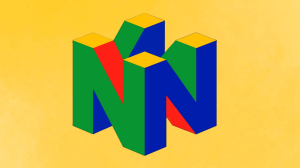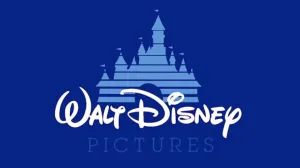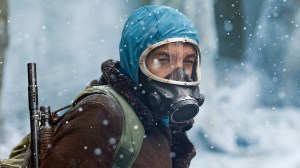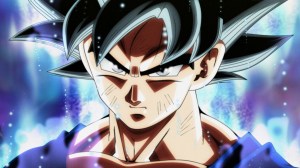1995’s Waterworld never got a direct cinematic sequel, leading the comic book realm to step in for that with the 1997 four-issue mini-series Waterworld: Children of Leviathan. Waterworld is set several centuries in the future after nearly all of Earth’s land has been submerged in a colossal flood. Kevin Costner portrays an aquatic wanderer with gills known as the Mariner, who happens upon a young woman and her adoptive mother, the former of whom has a tattoo on her back that many believe is a map to a mythical place known as Dryland. Though Waterworld became the poster child for box office flops in his 1995 release, it has since turned a profit and gained more love as a post-apocalyptic movie, with a Waterworld TV series also in development with Prey director Dan Trachtenberg attached. However, it will not be the first Waterworld sequel the world has seen.
Videos by ComicBook.com
Waterworld: Children of Leviathan once more centers on the Mariner as its protagonist, this time battling a new villain of the high seas known as Leviathan. Perhaps due to the initial commercial failure of Waterworld, Children of Leviathan has not gotten much time in the comic book spotlight. However, as with Waterworld aging as well as it has and growing a cult following, Children of Leviathan is very much worthy of the same recognition, especially for how much it builds upon the mythos first established in Waterworld.
The Story of Waterworld: Children of Leviathan
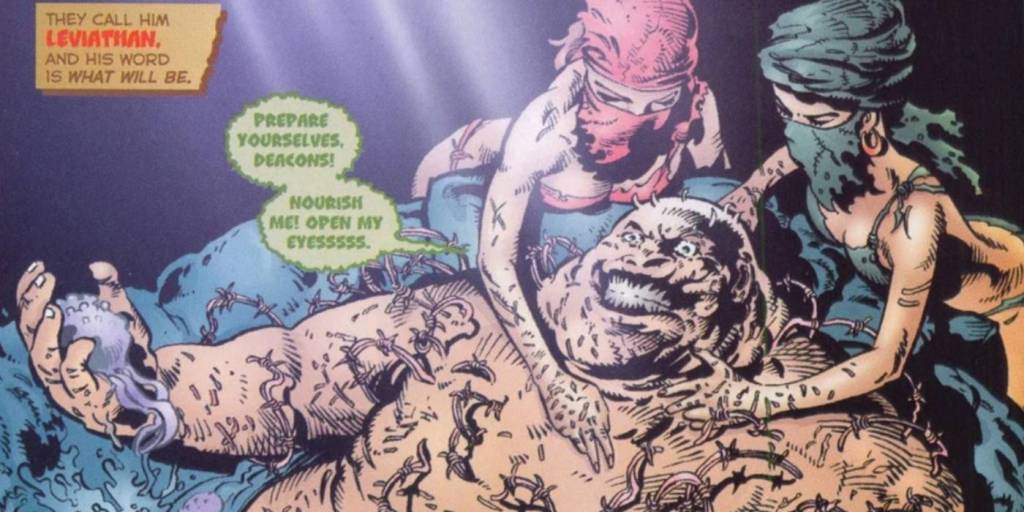
Children of Leviathan sees the Mariner continuing his sea-faring adventures after Waterworld, having built a new Trimaran after his original one was destroyed by the Smokers. The Mariner also experiences nightmarish flashbacks that seem to show him being held captive in a glass tube in a laboratory, while his undersea explorations of the flooded Earth eventually bring him into contact with a sect known as the Children of Leviathan, who attack an underwater sub of human survivors, with the Mariner rescuing one boy named Carlos from the attack.
The Mariner learns from Carlos that he hails from an underwater kingdom known as The Foundation, and also reveals the group’s history book includes images an an aquatic human like himself. This indicates that the Mariner’s gills might not have been an adaptation to the deluge of Waterworld, but a product of genetic experimentation that may also link him to the massive aquatic predator seen in the movie known as the Sea-Eater (referred to by the production team of Waterworld as the Whalephin). Meanwhile, the villainous Leviathan is determined to conquer the Foundation, leading to an undersea conflict between the Foundation and the Children of Leviathan with the Mariner in the midst of the fray.
RELATED: 5 Best Post-Apocalyptic TV Shows of Our Time
Waterworld Was Perfect for a Comic Book Tie-In, & Children of Leviathan Delivers
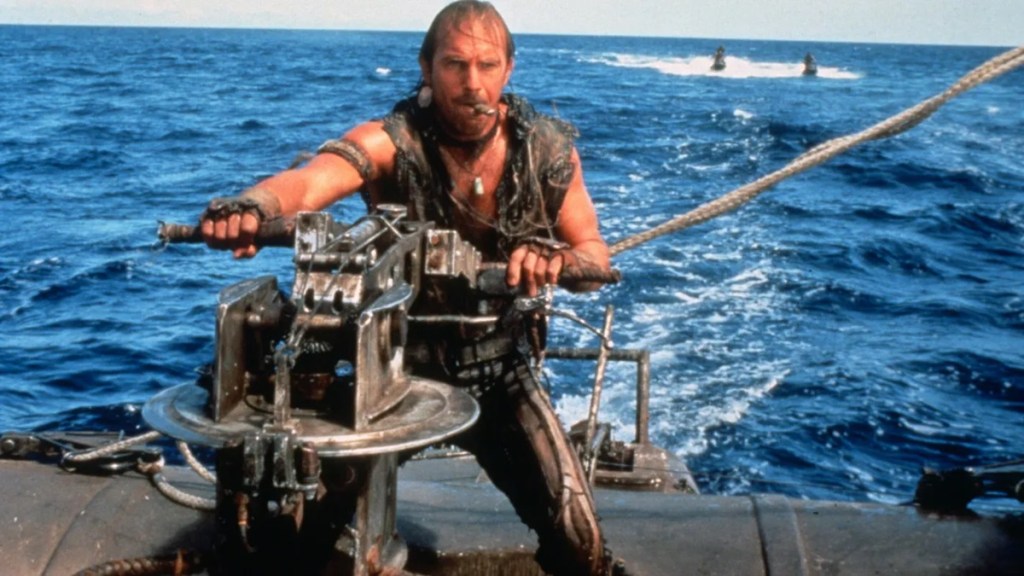
Released long before the 21st century era of cinematic universes, Waterworld is exactly the kind of big-screen sci-fi adventure whose world is tailor-made to be expanded upon is other media like comic books, and Children of Leviathan explodes the world and mythos that the movie introduced. Early on, Children of Leviathan indicates that the global flood itself happened differently than was initially presented in Waterworld, being the result of a meteor shower (“The ancients say icy death rained down from above”, as the book’s prologue puts it) rather than the effects of climate change, while the Mariner’s own origins are revealed to be radically different than even he ever thought.
Children of Leviathan‘s gorgeous artwork also paints a stunning comic book tapestry of the endless oceans of Waterworld, its fearsome apex predator the Sea-Eater, and the underwater communities some humans have built in contrast to the Atolls seen in the movie. Children of Leviathan also goes full comic book in the introduction of its villain Leviathan, portrayed in the book as a kind of aquatic Jabba the Hutt with megalomaniacal visions of ruling the high seas to rival the Deacon’s own desired conquest of Dryland. On every page of its four-issue run, Children of Leviathan is a massive expansion of the world first introduced in Waterworld guaranteed to pull any fan of the movie in hook, line, and sinker.
Why Children of Leviathan Is a Great Sequel to Waterworld

Considering the infamous production difficulties Waterworld encountered that made it the most expensive movie ever made at the time (at a now relatively common $175 million price tag), Children of Leviathan‘s story and especially its predominantly underwater setting is the perfect follow-up to the movie that preceded it. For a tough as Waterworld was to realize, doing anything underwater beyond the Mariner taking Helen (Jeanne Tripplehorn) to the flooded ruins of Denver, Colorado would have been completely undoable at the time. Children of Leviathan has no such budgetary or logistical restrictions in the comic book format, and is able to take readers into a deeper dive and grander adventure than than movie could.
Because of that, Children of Leviathan also does what any sequel or follow-up story should in expanding upon the world and characters introduced in its predecessor. With so much of Waterworld’s origin kept in the background previously, Children of Leviathan really pulls back the curtain while presenting everything in the context of the aquatic mythos that carried the movie. The Mariner himself becomes a much more fleshed out character with the glimpse he gets into his own origins, with the same happening for the factionalized landscape of humanity inhabiting Waterworld. The cherry on top is the epic scope of the sea-faring action of Children of Leviathan, with the Mariner helping to fight a war against an undersea conqueror in one panel and battling the Sea-Eater in the next on his Trimaran the next. Waterworld has grown in appreciation since its 1995 debut and shed the stigma of being defined purely as a box office bomb, and Waterworld: Children of Leviathan is a fantastic comic book continuation that shows that, like Waterworld itself, there is more to see than just what is on the surface.


